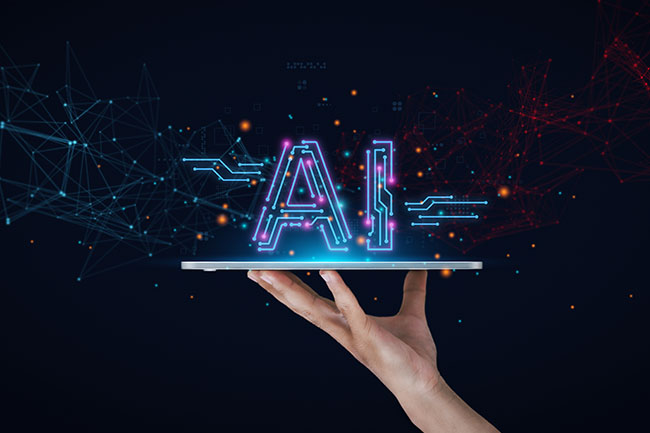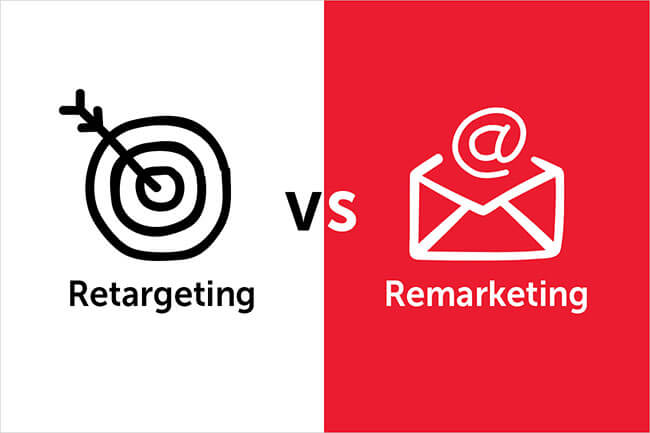AI has transformed digital marketing by leveraging data analysis, personalization, and automation. Marketers use AI to gain insights, target specific audiences, and optimize campaigns. The global AI in marketing market is expected to reach $35.13 billion by 2025, with a CAGR of 11.1%. Digital marketing relies on AI for automation, ad optimization, and personalized recommendations.
The significance of digital channels is steadily increasing, leading to a projected global expenditure of $455 billion on digital advertising in 2023. The future of digital marketing will be heavily influenced by AI, fostering innovation and yielding enhanced results.
What Is Generative AI And How Does It Works?
Generative AI is a specialized area of artificial intelligence that focuses on generating fresh content, including images, text, music, and videos. Unlike other AI systems that rely on existing data, generative AI has the capacity to create original content by learning patterns and structures from the training data it receives, similar to ChatGPT in conversational AI.
The functioning of generative AI involves utilizing deep learning models, particularly generative models like Generative Adversarial Networks (GANs) or Variational Autoencoders (VAEs). These models are trained on extensive datasets to grasp the underlying patterns and features of the data. Once trained, the generative model can produce new content by sampling from the learned patterns and generating novel outputs that resemble the original data.
In the case of GANs, the model comprises two components: a generator and a discriminator. The generator is responsible for creating new content, while the discriminator assesses the generated content and distinguishes it from real data. Through an iterative training process, the generator and discriminator engage in a competitive interplay, constantly enhancing the quality and authenticity of the generated content.
Generative AI finds applications in various fields, such as art, design, content creation, and even drug discovery. It possesses the capability to generate realistic images, craft engaging narratives, compose music, and much more, making it a powerful tool for creative and innovative pursuits.
Capabilities Of Generative AI
Generative AI possesses impressive capabilities such as content generation, data augmentation, style transfer, anomaly detection, personalization, recommendation, and virtual character creation. It can generate new content across various mediums, transfer artistic styles, detect anomalies, provide personalized recommendations, and create virtual characters. Generative AI is advancing rapidly and has the potential to revolutionize multiple domains.
The Role Of Generative AI In Digital Marketing
Generative AI plays a significant role in digital marketing by enabling personalized and engaging experiences for customers.
Here are some key aspects of its role:
- Content Creation: Generative AI can assist in generating diverse and high-quality content for digital marketing campaigns. It can create original text, images, and videos, allowing marketers to produce a variety of engaging content at scale. This capability helps in capturing audience attention and enhancing brand messaging.
- Personalized Marketing: Generative AI enables marketers to deliver personalized marketing messages tailored to individual customer preferences. By analyzing user data, including browsing history, demographics, and purchase behavior, generative AI can generate personalized recommendations, product descriptions, and targeted advertisements. This level of personalization enhances customer experiences and increases conversion rates.
- Ad Optimization: Generative AI can optimize ad campaigns by analyzing real-time data and user behavior. It can generate multiple ad variations and automatically test them to identify the most effective ones. This iterative process helps in optimizing ad placements, messages, and visuals, resulting in improved ad performance and return on investment.
- Chatbots and Virtual Assistants: Generative AI powers chatbots and virtual assistants, enabling automated and interactive customer support. These AI-driven conversational agents can engage with customers in real-time, answer queries, provide product recommendations, and assist in completing transactions. They enhance customer engagement and satisfaction by delivering personalized and prompt assistance.
- ata Analysis and Insights: Generative AI can analyze vast amounts of customer data to extract valuable insights and patterns. By leveraging machine learning algorithms, it can identify customer preferences, behavior trends, and market dynamics. Marketers can then utilize these insights to optimize marketing strategies, target specific audience segments, and refine their campaigns.
Ethical Considerations In Generative AI
Here are some key ethical considerations in the context of generative AI:
- Bias and Fairness: Avoiding biased outputs by training on diverse and unbiased datasets to prevent amplifying social, cultural, or gender biases.
- Intellectual Property and Copyright: Addressing ownership and copyright issues when generating content to protect the rights of content creators.
- Misuse and Fraudulent Activities: Implementing safeguards to prevent malicious use of generative AI, such as deepfake videos or fake news.
- Informed Consent and Privacy: Obtaining user consent and ensuring secure data handling practices when utilizing user data for personalization.
- Transparency and Explainability: Striving for transparency by providing explanations about model workings, training data, and limitations to build trust and enable informed decisions.
- Unintended Consequences: Anticipating and mitigating unintended consequences like job displacement or economic disparities caused by generative AI deployment.
The Significance Of Human Touch In AI-Driven Digital Marketing
The human touch is significant in AI-driven digital marketing for emotional connection, creative thinking, contextual understanding, ethical decision-making, and adaptability. It brings empathy, creativity, and the ability to understand complex contexts that AI may struggle with. Human involvement ensures personalized and ethical marketing strategies, fosters emotional connections, and enables adaptability to changing circumstances.
How To Implement Generative AI In Digital Marketing And Mention Best Practices
- Identify use cases where generative AI can add value to your digital marketing strategy and clearly define your objectives.
- Gather diverse and representative datasets, preprocess and clean them to ensure high-quality inputs for training the generative AI models.
- Select an appropriate generative AI model, considering factors such as complexity, training requirements, and output format.
- Train and validate the generative AI model, iterating and refining as needed to improve performance.
- Integrate the generative AI model into your existing digital marketing infrastructure and ensure compatibility with your technology stack.
- Continuously monitor and evaluate the generative AI system, addressing biases and issues, and fine-tuning for better results.
Best Practices:
- Address ethical considerations, including bias mitigation and privacy protection.
- Validate and test generated outputs for accuracy, relevance, and compliance.
- Combine generative AI with human oversight for quality control and a human touch.
- Seek feedback from customers to assess effectiveness and user experience.
- Stay updated with the latest research and advancements in generative AI.
Examples: Success Stories Of Generative AI In Digital Marketing
Nike: Nike utilized generative AI to create custom-designed sneakers through their “Nike By You” platform. Customers can use the platform to personalize and design their shoes, leveraging generative AI to generate unique design combinations based on user preferences. This approach provides a personalized and interactive shopping experience, attracting customers and driving sales.
Adobe: Adobe integrated generative AI into their marketing platform called “Adobe Sensei.” The platform uses generative AI to automate and optimize the creation of digital advertisements. By analyzing vast amounts of data, Adobe Sensei generates relevant and visually appealing ad variations, improving campaign performance and reducing manual effort.
Spotify: Spotify employs generative AI to curate personalized playlists for its users. Their “Discover Weekly” and “Release Radar” playlists are generated using AI algorithms that analyze user listening history, preferences, and patterns. This approach helps Spotify deliver highly tailored music recommendations, enhancing user engagement and loyalty.
Future Trends Of Generative AI In Digital Marketing
The future of generative AI in digital marketing holds exciting possibilities. Here are some anticipated trends:
Hyper-Personalization: Generative AI will enable even more precise personalization by analyzing vast amounts of data, including customer behavior, preferences, and contextual factors. Marketers can deliver highly tailored content, product recommendations, and interactive experiences that resonate with individual customers on a deeper level.
Enhanced Creativity: Generative AI will continue to evolve in generating original and creative content, such as text, images, and videos. It will assist marketers in creating compelling visuals, engaging storytelling, and immersive experiences, pushing the boundaries of creativity in digital marketing campaigns.
Real-Time Adaptation: Generative AI will enable real-time adaptation of marketing strategies based on dynamic changes in customer behavior, market trends, and external factors. Marketers can leverage AI-driven insights to adjust campaigns, messaging, and targeting strategies on the fly, ensuring relevance and responsiveness.
Augmented Reality (AR) Experiences: Generative AI will play a crucial role in developing more sophisticated AR experiences. It will generate virtual objects, characters, or environments that seamlessly blend with the real world, enhancing product visualization, interactive advertising, and immersive brand experiences.
Co-Creation with Customers: Generative AI will facilitate co-creation between marketers and customers. By involving customers in the content generation process, AI-powered tools can enable users to personalize and shape marketing materials, fostering engagement, brand advocacy, and a sense of ownership.
Ethical Considerations: As generative AI becomes more prevalent, addressing ethical considerations will gain increased attention. Stricter guidelines and regulations may emerge to ensure transparency, fairness, and accountability in the use of generative AI, safeguarding against biases, misinformation, and privacy concerns.
Cross-Channel Integration: Generative AI will facilitate seamless integration across multiple marketing channels, enabling consistent and personalized experiences throughout the customer journey. It will optimize content delivery, ad placements, and messaging across various platforms, including websites, social media, mobile apps, and voice assistants.
Conclusion
Generative AI holds immense potential for the future of digital marketing. It enables hyper-personalization, enhances creativity, facilitates real-time adaptation, and paves the way for augmented reality experiences. As marketers leverage generative AI, they can create more tailored and engaging campaigns that resonate with individual customers. However, ethical considerations and guidelines will be crucial to ensure transparency, fairness, and responsible use of generative AI. By embracing these trends and advancements, digital marketing agencies and marketers can harness the power of generative AI to drive impactful and innovative marketing strategies in the evolving digital landscape.





Tell us your thoughts in the comments